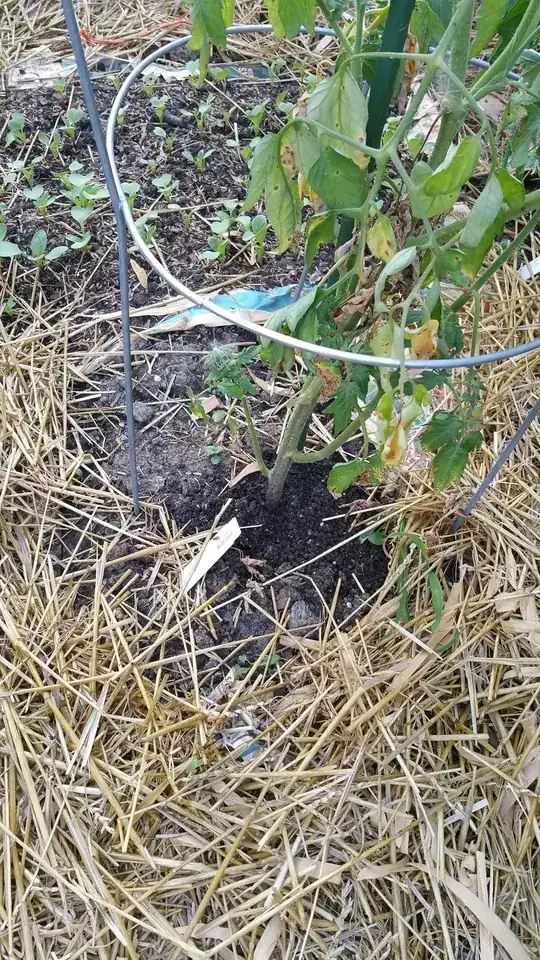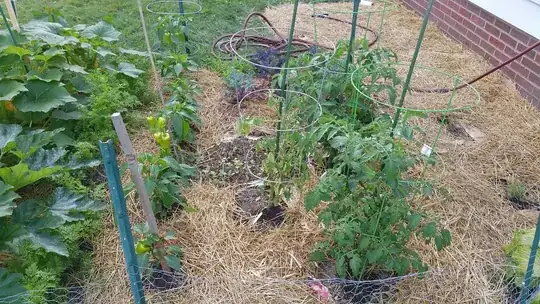This is a Great White plant, planted about 30 days ago. It has yellowing leaves with black spots, all tge leaves are drooping, and there are very few flower buds. I'm afraid I might need to dispose of the whole plant. I planted this about a month ago in tilled soil with compost and bagged manure mixed in, along with a spadeful of organic poultry poop fertilizer, and added another half-spadeful a couple weeks ago. It was doing ok until about a week ago. The leaves are droopy and starting to yellow and get some black spots. Yesterday I found a 3" long tomato hornworm on it which I plucked off. I mulched around the tomato plants with newspaper and straw to deal with a carpet of weeds that had been popping up. Now the soil around the plant seems pretty wet. So, what's going on with this plant? Did the hornworm do all this damage? Did the mulching trap in too much water and make the soil soggy? Is the problem reversible? I have 2 other tomato plants that are doing ok, but without many fruits. I checked all the tomato and pepper plants and plucked off a few more hornworms. Oh yeah, also I put that stake in about a week ago. Could that have pierced and damaged the roots?

UPDATE: Ok as someone requested I'm adding more pictures. I have mulched with straw, and it's pulled away from the base of this plant because I was worried it was keeping the soil too soggy. Also I added a scoop of fertilizer, but that was after this yellowing happened. The plant is about 20-30 inches away from each of the other 2 tomato plants (different varieties). Also, the other two seem to have decent vegetative growth and very few fruits.
It looks like the plant is pretty far gone now. Should I call it quits before that fungus spreads to the other 2?


